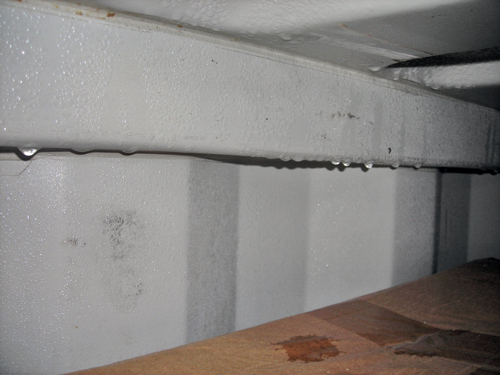Preventing Water Damage: A Guide to Rainproofing Your Shipping Container


Uploaded on Tue Aug 01
Shipping containers have become increasingly popular, serving as accomodations, workspaces, and storage units. Their robust structure and portability make them particularly appealing. However, as they are made of steel and are typically left outside, exposure to weather elements can lead to damage, especially from water. In order to ensure the longevity and effectiveness of your investment, one must take proactive steps to rainproof their shipping container. This blog post will guide you through the steps you can take to maximize your container's weather resistance and protect it from water related damage.
Why the need for rainproofing?
First and foremost, we must understand why rainproofing is necessary. While it is true that shipping containers are designed to withstand harsh weather conditions during transport on high seas, they are still susceptible to rust and water damage when left idle and exposed.
Over time, prolonged exposure to moisture can break down the paint and protective coatings on steel, leading it to rust. Once it rusts, the integrity of the material weakens, often leading to leakage, which can cause serious damage to the interior of the containers, jeopardising both the structure and contents.
Rainproofing Techniques
The good news is that the risk of water damage can be significantly minimized by applying some simple, yet effective rainproofing techniques:
1. Regular Repaint and Maintenance
Just as you would take care of the external structure of your house, you need to provide your shipping container with the same care and attention to sustain its durability. Repainting your shipping container can help with rainproofing as it adds an extra layer of protection against the harsh weather elements. Ideally, using marine-grade paint would be the best for optimum protection. This type of paint has proven to be highly effective in shielding against corrosion and damaging climate conditions.
2. Sealant Application
To prevent water from seeping into your shipping container, you could use a sealant. Typically used on roofs, sealant products are ideal for shipping containers. They form a protective layer over the surface, insulating the material from the harmful effects of water exposure. Consider applying a sealant to the roof and seams of your container for added assurance.
3. Regular Inspection for Damage
Routine checks and inspections are critical to maintaining the condition of your shipping container. Identify areas with rust formation, cracks, or dents. Early detection allows for prompt action, either through scraping off the rusted areas and repainting them, or by repairing the cracked zones.
4. Use a Roof Shield
While marine-grade paint and sealant application can prevent water damage, for added measure, you could use a roof shield. It is an additional layer of protection that redirects the water away from the container. Roof shields are particularly beneficial in regions with heavy rainfall, as they significantly reduce the amount of water drastically that comes into direct contact with the container.
5. Install Gutter Systems
Installing a gutter system on your shipping container can immensely reduce the risk of water saturation. Gutters collect and redirect rainwater away from the structure, preventing prolonged exposure to water, decreasing rust formation. Not only does it safeguard the container, but it also helps in managing the water flow around the area where the container is placed.
Mitigating Interior Moisture
While most water damage comes from the exterior, interior moisture can also prove problematic. Here are some ways to curb its formation:
1. Install Vents
Incorporating vents into your container design can considerably improve air circulation, minimizing the chances of condensation.
2. Use Insulation
Insulation acts as a barrier to temperature difference, helping prevent condensation build-up inside the container. It aids in maintaining a consistent internal temperature, despite fluctuating external temperatures.
3. Desiccants
Desiccants are substances that absorb moisture and maintain a state of dryness in its vicinity. Placing desiccants within your shipping container can assist in managing humidity levels and preventing moisture formation.
In conclusion, while water damage may be a concern for those considering investing in a shipping container, this guide clearly demonstrates that there are effective ways to protect your container and increase its longevity. Regular maintenance, the use of sealants and paints, the installment of roof shields, and gutters can all aid in conservely your container's structural integrity.
At our online store, we not only sell high-quality shipping containers, but we also offer additional services to assist you in implementing any of the aforementioned rainproofing techniques. Browse through our website to explore these services and feel free to reach out to our dedicated customer service team to assist you with any queries. In the end, remember, taking preventative measures now will certainly save you a great deal in the long run.




